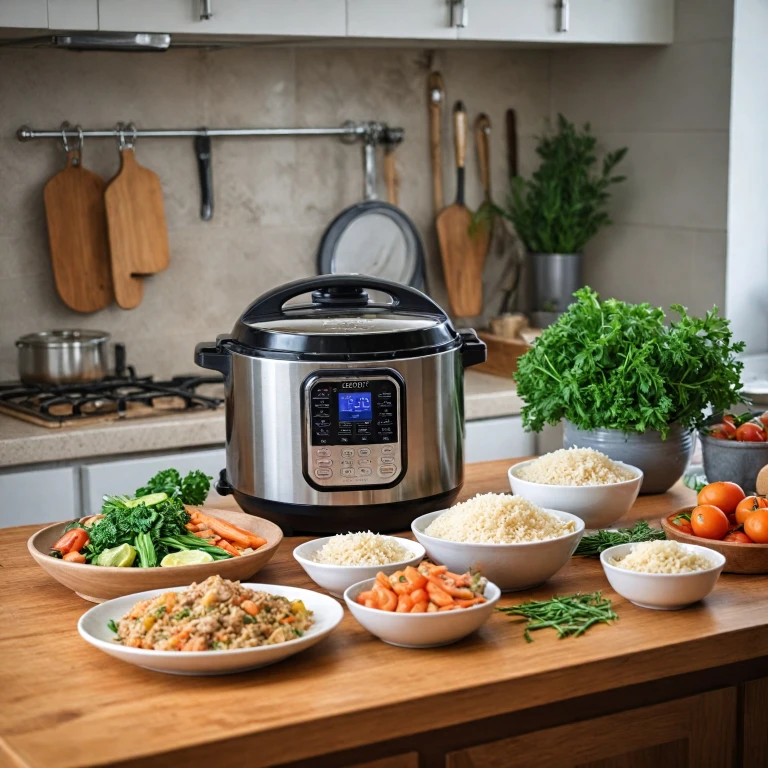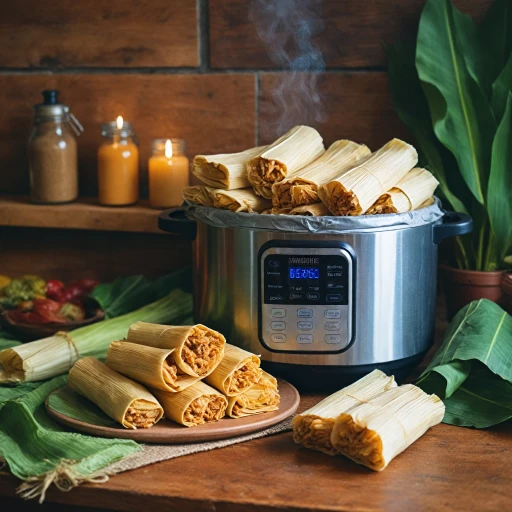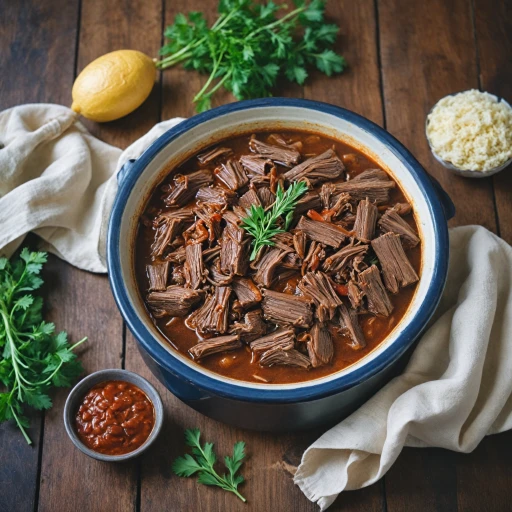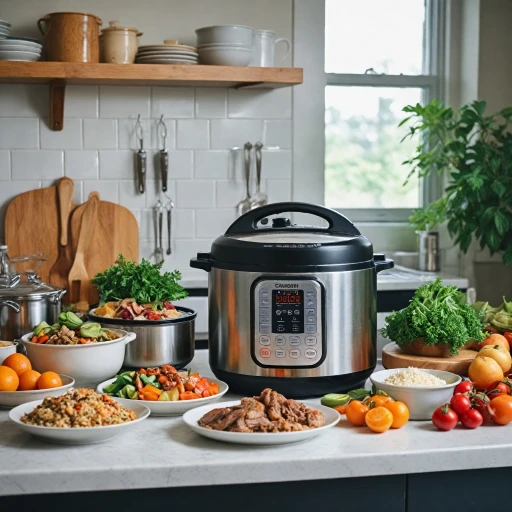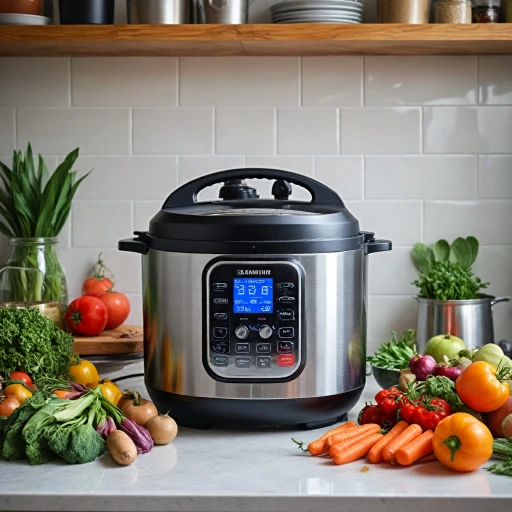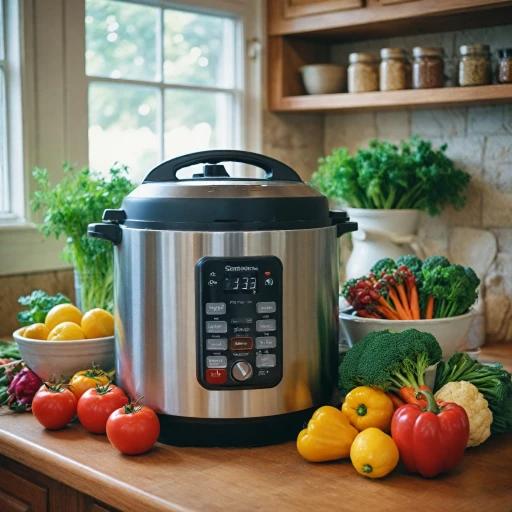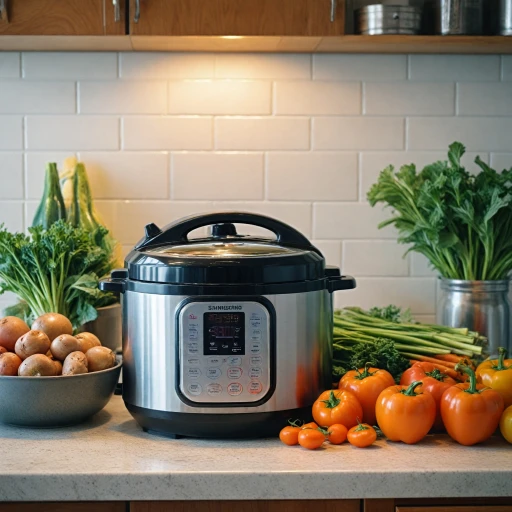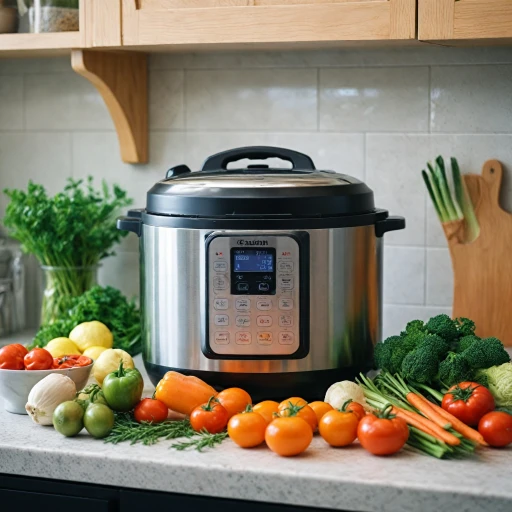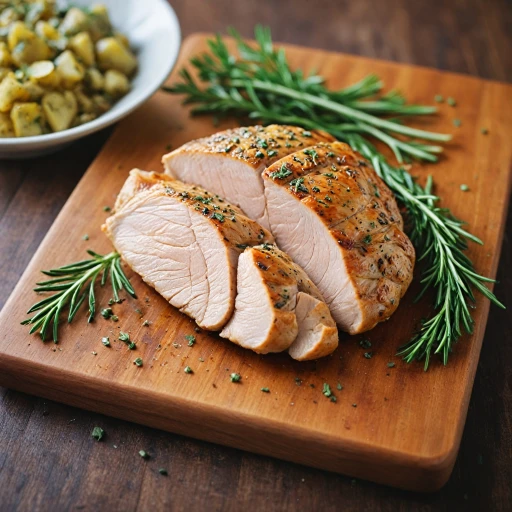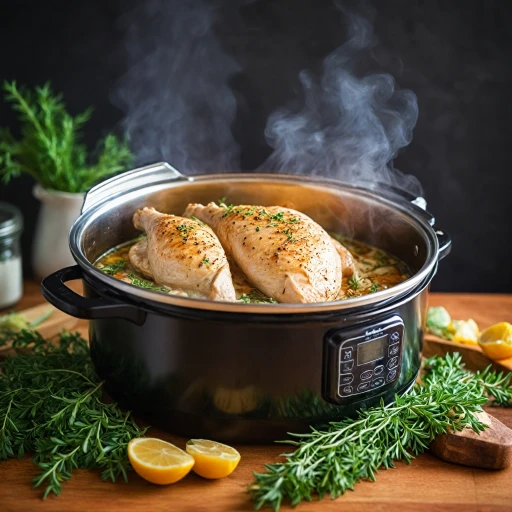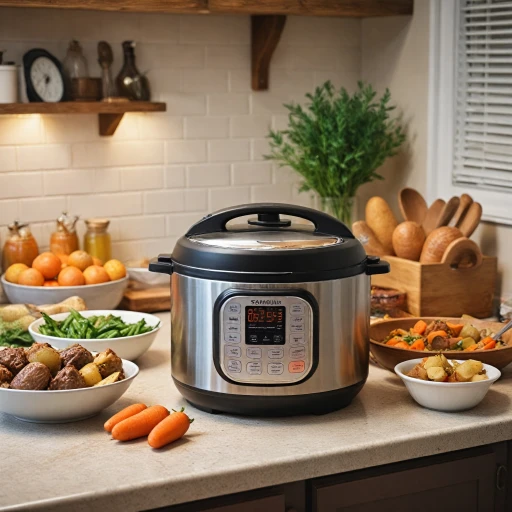
Understanding the Basics of Pressure Cooking Rice
Introduction to Pressure Cooking Methods for Rice
Pressure cooking with an electric cooker is a modern culinary trend that saves both time and enhances the flavor of rice dishes. This cooking method utilizes high pressure to cook rice more quickly compared to traditional boiling methods, ensuring perfectly cooked rice every time. When using an electric pressure cooker, the rice is cooked under steam pressure, resulting in a moist and fluffy texture. The cooking time can vary depending on the type of rice, but typically it only takes a few minutes at high pressure to achieve a perfectly cooked pot of rice. Before diving into recipes or getting creative with flavors, it's crucial to understand the importance of the water-to-rice ratio and the specific cook time required for different rice types. White rice, for example, generally cooks faster than brown rice due to its softer grain structure.The Role of an Instant Pot in Rice Cooking
Among the various electric pressure cookers available, the Instant Pot is renowned for its efficiency and ease of use when preparing rice dishes. Whether you're preparing pot rice for a family meal or experimenting with new rice recipes, this multifunctional appliance offers versatile options. With its preset functions, the Instant Pot simplifies the cooking process by automatically adjusting the pressure release and cook time for optimal results. It’s important to rinse rice thoroughly before cooking to remove excess starch, which can affect the texture of the cooked rice. To further explore the nuances of perfecting rice using an electric pressure cooker, check out our detailed guide on mastering perfect rice with an Instapot. Complement this foundational understanding with insights into choosing the right rice and troubleshooting common issues as the knowledge acquired here is built upon in subsequent sections.Choosing the Right Rice for Pressure Cooking
Selecting the Ideal Variety for Optimal Results
Choosing the right type of rice is crucial for achieving perfectly cooked grains in your electric pressure cooker. Understanding the differences between various types of rice, such as white, brown, and others, can significantly impact the final texture and flavor. White rice is a favorite for many due to its soft and fluffy texture when cooked. It generally requires less cooking time in the pressure cooker, usually around 4 to 6 minutes at high pressure, followed by a quick pressure release. On the other hand, brown rice takes longer due to its tougher outer layer, often needing 22 to 25 minutes at high pressure with a natural pressure release to ensure it is cooked through. When selecting your rice, consider the recipe you are aiming to achieve. Whether you prefer the nutty flavor of brown rice or the light, airy consistency of white rice, each variety will have its unique cooking time and water ratio. Generally, for white rice, use a 1:1 ratio of rice and water, while brown rice typically requires about 1 1/4 cups of water per cup of rice. Finally, always rinse rice before placing it in the cooker. Rinsing helps remove excess starch, which can prevent the rice from becoming sticky and clumping together, leading to a better texture in your dishes. For those seeking additional guidance, explore mastering the rice setting on your instant pot and further enhance your culinary skills. Check out this guide for detailed insights.Step-by-Step Guide to Cooking Rice in an Electric Pressure Cooker
Steps to Perfect Rice with Your Electric Pressure Cooker
Bringing the art of cooking rice into your kitchen can transform your culinary adventures, and using an electric pressure cooker is an efficient method to achieve the perfect result every time. Follow this step-by-step guide to master rice cooking with confidence.
Preparation
Before you begin, make sure you have gathered all the necessary ingredients and tools. You will need:
- 1 cup of your chosen rice variety (white rice, brown rice, etc.)
- 1.5 cups of water for white rice or 2 cups for brown rice
- Your electric pressure cooker
- A measuring cup and spoon
Start by rinsing the rice under cold water. This step is crucial as it removes excess starch from the rice, preventing it from becoming gummy once cooked. Rinse rice until the water runs clear, indicating that it is properly cleaned.
Cooking Process
1. Add the rinsed rice to the inner pot of the pressure cooker. Notice how the grains of rice are still slightly wet. This is normal, and there is no need to dry them.
2. Pour the water over the rice, ensuring the rice is submerged. The ratio of water to rice is critical and must be measured accurately to achieve the desired texture.
3. Close the lid of your pressure cooker and ensure the pressure valve is set to the sealing position to prevent steam from escaping during cooking.
4. Select the 'Rice' setting or manually set the cooker to a high pressure for 3 to 4 minutes for white rice. For brown rice, extend the cooking time to approximately 22 to 24 minutes.
Pressure Release
Once the cooking time has elapsed, allow the pressure to release naturally for about 10 minutes before carefully switching the pressure valve to the venting position to release any remaining pressure.
Gently fluff the cooked rice with a fork to separate the grains, ready to serve as a base for your favorite dishes or to enjoy on its own.
For more precise cooking methods, explore our additional recipes and techniques to maximize the potential of your electric pressure cooker.
Troubleshooting Common Issues in Pressure Cooking Rice
Resolving Common Hiccups in Pressure Cooking Rice
Pressure cooking rice can occasionally present some challenges, but with a bit of troubleshooting, you can resolve most issues effectively. Here are some common concerns and their solutions:- Rice Texture Too Mushy or Undercooked: If your rice turns out too mushy, it's often due to an excessive amount of water. Consider adjusting your rice-to-water ratio for the next attempt. On the flip side, undercooked rice typically means insufficient water or inadequate cooking time. Ensure you're measuring your rice and water accurately, and adjust the cooking time to match your specific type of rice.
- Sticky or Clumped Rice: To prevent rice from sticking together, always rinse rice before cooking. Rinsing helps remove excess starch, which is one of the primary culprits of sticky rice. Additionally, consider using a large enough pot to allow the rice to move freely as it cooks, promoting even texture.
- Burn Notice on Instant Pot: This can occur when there isn't enough liquid in your cooker, causing the rice to stick and burn at the bottom. To prevent this, ensure you've added the correct amount of water and rice, and that the lid is secured before starting the cook time.
- Rice Sticking to the Pot: If you often find rice sticking to the pot, apply a thin layer of oil or cooking spray before adding rice and water. This can create a barrier, reducing direct contact between the rice and the cooker.
- Pressure Release Issues: Different rice variants require different pressure release times. For white rice, a natural pressure release allows for softer grains, while a quick release is often recommended for maintaining the texture of brown rice. Tailoring the release technique can help you achieve the desired consistency.
Enhancing Your Rice with Flavor and Texture
Enhancing Flavor through Nutritional Broth
For those seeking to elevate their rice cooking endeavors beyond the standard water and rice duo, consider delving into the fragrant world of nutritional broths. Swapping water for broth, whether it's vegetable, chicken, or beef, can impart a rich depth to your rice.
Incorporating Aromatics for Depth
Incorporating aromatic elements such as garlic, ginger, or onions during the sauté setting of your electric pressure cooker can introduce subtle layers of flavor. Sauté the aromatics briefly before adding rice and water or broth, ensuring they release their flavors without dominating the dish.
Adding Texture with Nuts and Seeds
Beyond just taste, consider the texture of your cooked rice. Adding toasted nuts or seeds—such as almonds or sesame seeds—immediately after the pressure release can elevate the mouthfeel and visual appeal of the dish. Allow them to mix evenly while the rice still retains steam.
Experimenting with Grains for Variety
Infuse a new dimension into your rice recipes by including a variety of grains. Quinoa, barley, or wild rice mixed with white or brown rice can introduce diverse textures and contribute additional nutrients.
Seasoning with Herbs and Spices
To amplify flavors, experiment with a range of herbs and spices. Fresh herbs like cilantro or parsley can be added just before serving, while spices such as turmeric or saffron introduced during cooking can bring warmth and color to the pot rice dish.
Safety Tips and Maintenance for Your Electric Pressure Cooker
Essential Safety Practices
When using an electric pressure cooker, safety should always be a priority. Before you start cooking rice or any other recipe, ensure that the cooker is placed on a stable, heat-resistant surface. Always check that the sealing ring is properly positioned and in good condition to prevent steam from escaping, which can affect the cooking time and pressure.
Proper Maintenance for Longevity
Maintaining your electric pressure cooker is crucial for its longevity and performance. After each use, clean the inner pot thoroughly, especially if you've cooked rice, as starch can build up. Rinse the pot with warm water and mild detergent, ensuring no residue is left. Regularly inspect the pressure release valve and the sealing ring for any signs of wear or damage, replacing them as needed.
Handling Pressure Release Safely
Understanding how to safely release pressure is vital. Whether you're cooking white rice or brown rice, always follow the recipe's instructions for pressure release. Quick release can be used for recipes that require immediate pressure reduction, while natural release is better for dishes that benefit from additional cooking time. Be cautious of the steam when using quick release to avoid burns.
Storage and Care Tips
After cooking and cleaning, store your pressure cooker in a dry place. Ensure the lid is not tightly sealed when storing, as this can affect the sealing ring's elasticity. By following these safety and maintenance tips, your electric pressure cooker will remain a reliable tool for cooking perfect rice and other meals.
